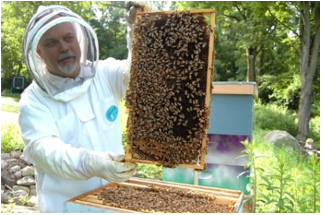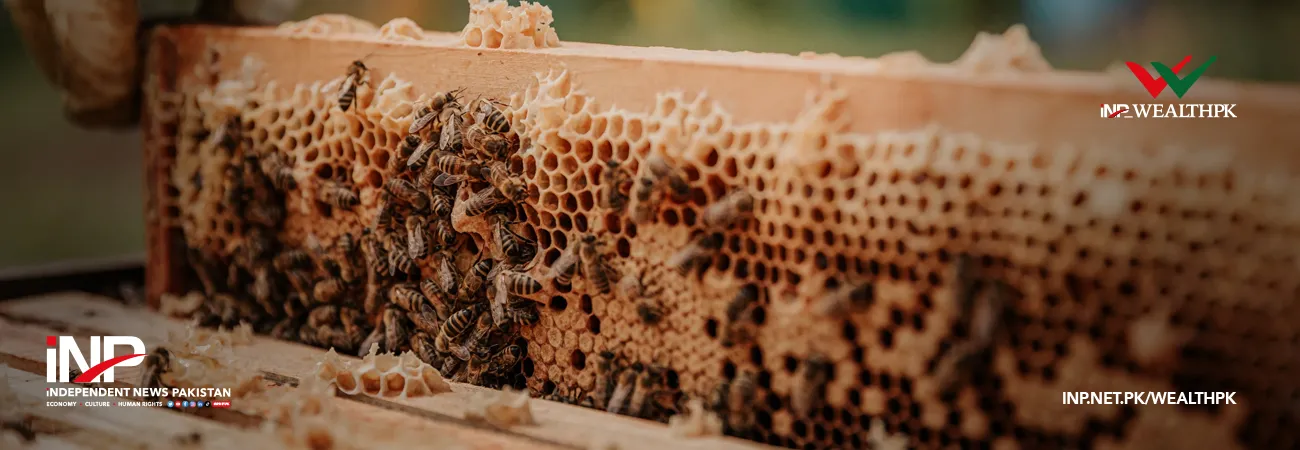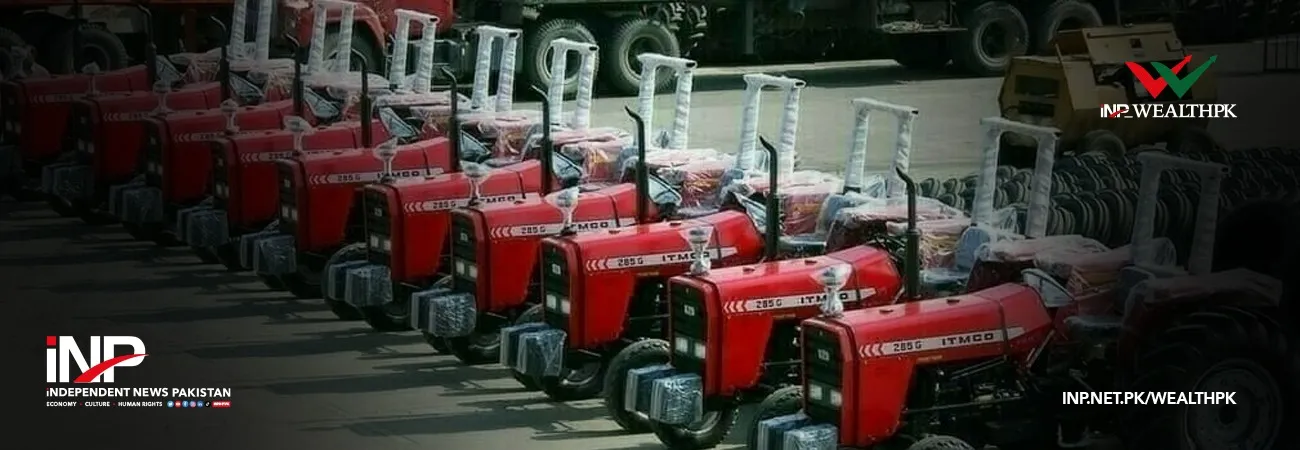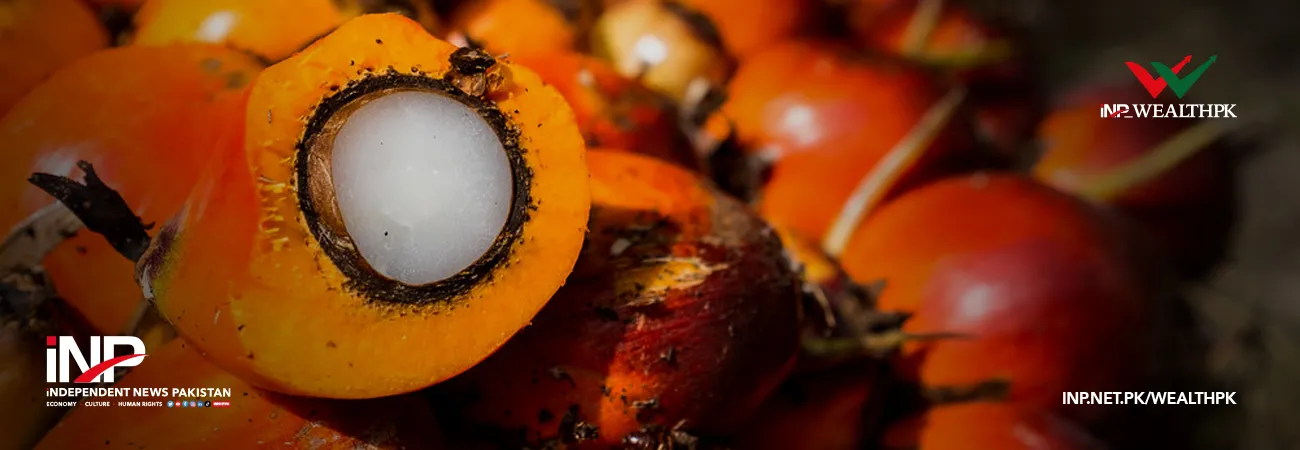آئی این پی ویلتھ پی کے
Azeem Ahmed Khan
Beekeeping has the potential to become a major contributor to Pakistan’s agricultural growth, economic development, and environmental sustainability – provided it receives adequate government support, public awareness, and technological innovation, Kamranullah, a honey trader and beekeeping trainer, said.

In an interview with WealthPK, Kamranullah, who is related to Tarnab Farm Peshawar, stressed that with the right investments and institutional backing, the beekeeping industry could significantly boost Pakistan’s economy while promoting eco-friendly farming practices.
He explained that bees play a crucial role in boosting agricultural productivity through pollination, which enhances crop yields and supports biodiversity. “Beyond honey production, bees are vital for pollinating crops like fruits, vegetables, and oilseeds – improving both quality and quantity of harvests,” he added.
Currently, the beekeeping sector supports over 10,000 families across Pakistan and produces between 12,000 and 15,000 metric tonnes of honey each year. This has helped raise rural incomes and reduce poverty in various regions, Kamranullah noted.
Honey, the primary product of beekeeping, is a nutritious natural food rich in vitamins, minerals, and antioxidants, he said. “Its regular consumption offers numerous health benefits,” he added.
In addition to honey, the industry also produces valuable byproducts such as beeswax, royal jelly, and propolis – all of which have medicinal and commercial uses, he said, adding, “This makes beekeeping an attractive and profitable option for small-scale farmers and rural communities looking to diversify their income sources.”
Despite its promise, the industry faces several challenges, including climate change, habitat loss, and diseases like Varroa mites and Nosema. A major issue, Kamranullah pointed out, is the lack of technical knowledge among beekeepers, which often leads to poor hive management and reduced productivity.
He identified regions like Khyber Pakhtunkhwa, northern and central Punjab, and parts of Azad Kashmir as key beekeeping hubs due to their favourable climates and rich biodiversity. Pakistan is home to several bee species, including native ones like Apis dorsata, A florea, and A cerana, as well as the imported A mellifera, which together contribute to the production of various honey types known for their unique flavours and health benefits, he added.
Among the most sought-after honey varieties produced in Pakistan are Sidr honey, Acacia honey, and Wildflower honey –prized for their purity, taste, and therapeutic properties. With growing interest in natural and organic products, demand for Pakistani honey is increasing both locally and in international markets, especially in the Middle East and Europe, he added.
However, Kamranullah warned that threats such as pesticide misuse, habitat destruction, and limited disease management continue to limit the sector’s growth. He emphasised the need for better training and resources for beekeepers to overcome these issues.
Despite these obstacles, Kamranullah remains hopeful about the future of beekeeping in Pakistan. Rising domestic consumption and growing export potential are key drivers of the industry’s future success. He believes government initiatives to support beekeeping can further strengthen rural livelihoods and boost the industry’s role in the national economy.
Kamranullah also highlighted the importance of public education on the essential role of bees in agriculture. “Promoting sustainable beekeeping and conservation efforts is vital for maintaining a healthy ecosystem and ensuring long-term agricultural productivity,” he said.
Tarnab Farm, which Kamranullah manages, produces Sidr and Acacia honeys, valued for their medicinal benefits and rich flavour, he said.
Describing beekeeping practices in the country, he said methods vary by region and bee species. Some beekeepers still use traditional methods, such as clay pots or woven baskets, while others adopt transitional practices that blend modern hive designs with traditional techniques.
The most advanced approach involves modern beekeeping using standardised hives that allow efficient management, better yields, and healthier bee colonies, he added.
Credit: INP-WealthPk












